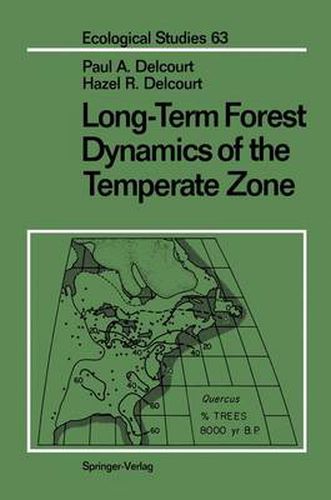Readings Newsletter
Become a Readings Member to make your shopping experience even easier.
Sign in or sign up for free!
You’re not far away from qualifying for FREE standard shipping within Australia
You’ve qualified for FREE standard shipping within Australia
The cart is loading…






This title is printed to order. This book may have been self-published. If so, we cannot guarantee the quality of the content. In the main most books will have gone through the editing process however some may not. We therefore suggest that you be aware of this before ordering this book. If in doubt check either the author or publisher’s details as we are unable to accept any returns unless they are faulty. Please contact us if you have any questions.
The synthesis presented in this volume is a direct outgrowth of our ten-year FORMAP Project (Forest Mapping Across Eastern North America from 20,000 yr B.P. to the Present). Many previous research efforts in paleoecology have used plant-fossil evidence as proxy information for primarily geologic or climatic reconstructions or as a bio stratigraphic basis for correlation of regional events. In contrast, in this book, we deal with ecological questions that require a holistic perspective that integrates the interactions of biota with their dynamically changing environments over time scales up to tens of thousands of years. In the FORMAP Project, our major research objective has been to use late-Quaternary plant-ecological data sets to evaluate long-term patterns and processes in forest de velopment. In order to accomplish this objective, we have prepared subcontinent-scale calibrations that quantitatively relate the production and dispersal of arboreal pollen to dominance in the vegetation for the major tree types of eastern North America. Quantification of pollen-vegetation relationships provides a basis for developing quan titative plant-ecological data sets that allow further ecological analysis of both individual taxa and forest communities through time. Application of these calibrations to fossil pollen records for interpreting forest history thus represents a fundamental step beyond traditional summaries based upon pollen percentages.
$9.00 standard shipping within Australia
FREE standard shipping within Australia for orders over $100.00
Express & International shipping calculated at checkout
This title is printed to order. This book may have been self-published. If so, we cannot guarantee the quality of the content. In the main most books will have gone through the editing process however some may not. We therefore suggest that you be aware of this before ordering this book. If in doubt check either the author or publisher’s details as we are unable to accept any returns unless they are faulty. Please contact us if you have any questions.
The synthesis presented in this volume is a direct outgrowth of our ten-year FORMAP Project (Forest Mapping Across Eastern North America from 20,000 yr B.P. to the Present). Many previous research efforts in paleoecology have used plant-fossil evidence as proxy information for primarily geologic or climatic reconstructions or as a bio stratigraphic basis for correlation of regional events. In contrast, in this book, we deal with ecological questions that require a holistic perspective that integrates the interactions of biota with their dynamically changing environments over time scales up to tens of thousands of years. In the FORMAP Project, our major research objective has been to use late-Quaternary plant-ecological data sets to evaluate long-term patterns and processes in forest de velopment. In order to accomplish this objective, we have prepared subcontinent-scale calibrations that quantitatively relate the production and dispersal of arboreal pollen to dominance in the vegetation for the major tree types of eastern North America. Quantification of pollen-vegetation relationships provides a basis for developing quan titative plant-ecological data sets that allow further ecological analysis of both individual taxa and forest communities through time. Application of these calibrations to fossil pollen records for interpreting forest history thus represents a fundamental step beyond traditional summaries based upon pollen percentages.